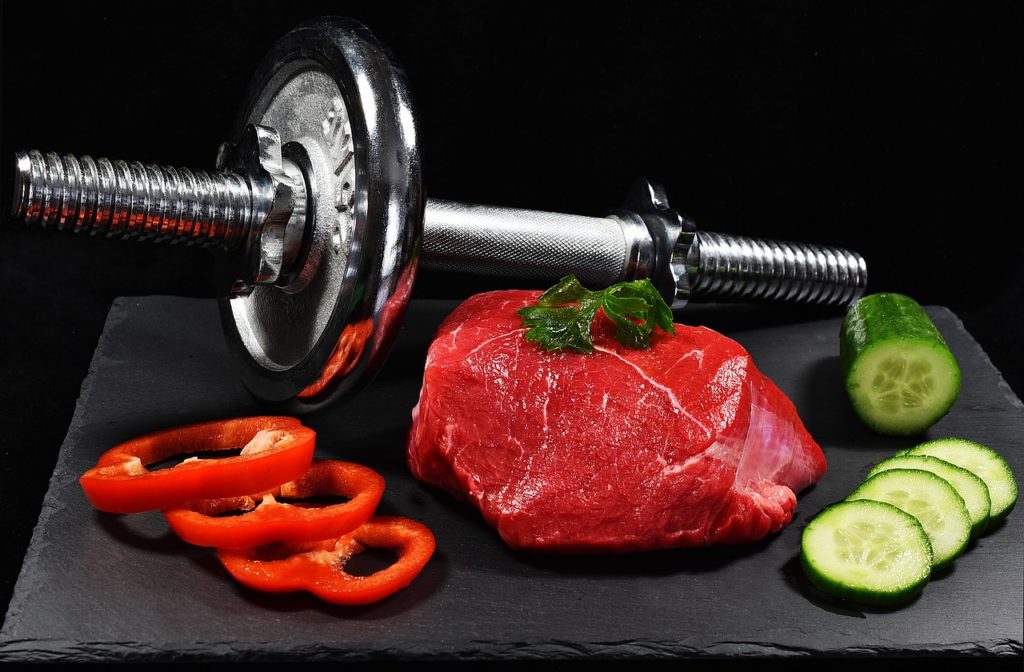It is not unusual these days to be part of a conversation regarding intermittent fasting or reading about the subject in social media and sports and lifestyle news and blogs. For many, it is not so clear what Intermittent fasting means and how to enjoy the benefits of such a process. Also, there are some guidelines to follow when doing intermittent fasting while exercising and there is an impact on the results.

Intermittent fasting (IF), is simply an eating pattern that cycles between periods of fasting and eating.
There are several IF patterns, cycling between hours of fasting or even full days fasting several times per week. Intermittent fasting is not a diet. Intermittent Fasting doesn’t specify by itself which foods you should eat, and in general, you should follow the general nutrition guidelines for your own food intake recommendations and based on your specific lifestyle and needs.
IF is not new. Sometimes people had to fast not by choice but due to availability of food, due to cultures, religions and communities habits. Then it evolved also to a lifestyle learning the benefits of keeping such fasting routines.
There are tons of researches and solid evident’s over…rats. They lose weight. They have better measures of blood pressure, cholesterol, and blood sugars.
Tested over humans, it is showed that intermittent fasting is safe and can be beneficial if following specific patterns and following specific timing. And, in such case, it can indeed show better results on body’s parameters, as well as for diabetes prevention.
Not all intermittent fasting patterns are equal. Some indeed can be more effective and sustainable.
Let’s see what happens inside our bodies when we eat and when we don’t .
The food we eat is broken down by enzymes in our gut (and sugar starts the process in the mouth by the Salivary amylase). sugars and some other high Glycemic index foods are faster absorbed in the blood as sugars which our cells use for energy. Insulin levels rise up to handle the sugars in the bloodstream to the cells, and unused energy eventually is stored in fat cells.
Between meals, insulin levels will go down as long as we don’t consume more food. When needed, the fat cells will release energy ( the fat conversion product) to be used by our cells. We will lose weight when more and more fat cells will release fat to convert to energy.
The process happening while fasting is actually not far from the concept of Keto diet, in which such diets and eating patterns use ketosis process for energy and not carbohydrates from food (eating very low carbohydrates and low glycemic foods).
Comparison research done by the University of Alabama showed a better and significant advantage for IF that uses the pattern of 8 hours eating window, between 7 am to 3 pm, over 12 hours eating pattern. The 8-hours pattern group had lower insulin levels and sensitivity, lower blood pressure and, also had significantly decreased appetite.
In addition, IF has other cellular and hormonal benefits. During fasting periods certain hormones levels are positively impacted. HGH, Human Growth Hormone which plays an important role in muscle building and fat burning processes. Insulin sensitivity and insulin levels get lower.
Although the benefits there are some insights we should pay attention to:
Intermittent fasting is not fully optimized for maximum muscle gain. This because of the protein synthesis and the calorie surplus required for full muscle hypertrophy.
Important factor is to adjust the fasting period to your workouts routines. As you would like to have available nutrients and energy for your training, you should take into considerations when you start and stop fasting.
For many who can workout at evening times it is convenient to stop eating around 2 hours before sleep time, then to skip breakfast and start eating the first meal later noon.
For those who can’t exercise in evening times and perform early morning runs or morning workouts, there are two alternatives. working out in the gym while fasted can be totally ok after you get used to it. You can consume some portion of protein supplement and have a coffee (or caffeine supplement) to support the workout. Or, you can adjust the eating window time accordingly. Eating at morning and fasting from late afternoon. This can be more difficult and it is very individual experience so you should try what works the best for you and check how you can adjust your daily matters.
As it may be hard to adjust to the fasting periods and in general, you can allow yourself to drink black coffee which acts as an appetite suppressant, drinking tea or zero calorie beverages.
Fasting patterns that are close to the circadian rhythm, eating only in day time 6-10 hours window can yield better results, combining with the right nutrition, we can yield more benefits to the fasting.
For lower insulin levels and fat burning, there is an advantage for defined fixed meals while avoiding snacking between meals.
If you wish to adopt intermittent fasting, adopt one that is easier for you to follow and maintain over
Working out and getting stronger while intermittent fasting more complicated but it is achievable. support your workouts with the required nutrients and adjust fasting cycles to fit your daily routines and the possible workout periods. Some athletes actually report that their strength peaks are after the 16 hours fast.
For some, who trains more of the aerobic during and adjacent to the fasting period, use low-calorie hydration sources and electrolytes supplementation.
Leave a comment